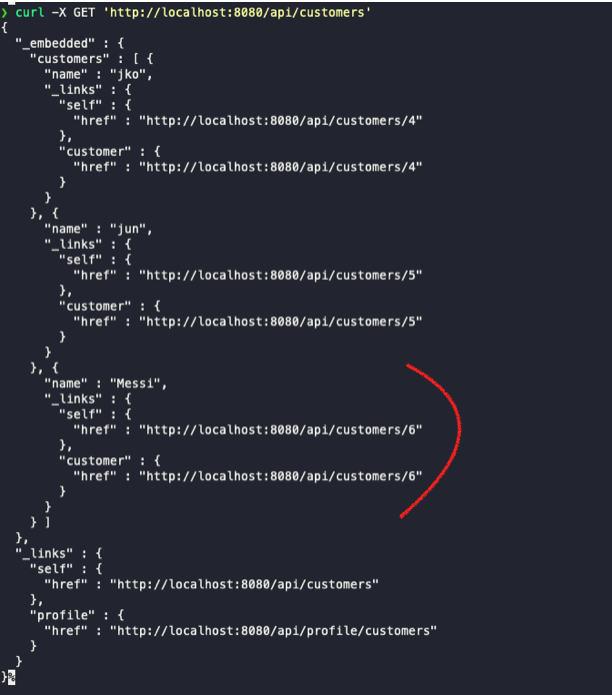Spring Data REST
Spring Data repositories 위에서 hypermedia-driven REST web service 를 쉽게 만들 수 있는 Spring Data REST 에 대해 정리해보자.
Intro
multi-domain object 시스템을 위한 REST 웹 서비스를 구현하는 것은, 지루하고 반복적인 작업이고 많은 boilerplate code 를 생성한다.
Spring Data REST 는 Spring Data repositories 위에 구축되고 자동으로 REST resource 를 노출한다.
Getting started
Dependency
Spring Boot project 에 Spring Data Rest 의존성을 추가해보자.
1 | dependencies { |
URI
default 로, Spring Data REST 는 root URI 인 ‘/‘ 에 REST resources 를 제공한다.
application.properties 에 아래와 같이 base URI 를 변경할 수 있다.
1 | =/api |
Data Store
data store 를 지정해야한다. Spring Data REST 는 아래를 지원한다.
- Spring Data JPA
- Spring Data MongoDB
- Spring Data Neo4j
- Spring Data GemFire
- Spring Data Cassandra
Spring Data JPA 를 활용해보자. 그리고 DB 는 H2 를 사용해보자.
1 | dependencies { |
그리고, 다음과 같이 필요한 최소한의 설정만 하자.
1 | =create |
Init Data
Product, Customer entity 를 추가하자.
1 |
|
해당 repository 를 추가한다.
1 | interface ProductRepository: CrudRepository<Product, Long> |
ApplicationRunner 를 활용해서, application 이 구동될 때, data init 을 하자.
1 |
|
Resource Discoverability
이제 application 을 구동해보자. 위에서 지정한 ‘/api’ 를 호출해보자.
base URL 을 호출함으로써, resource 의 next level 을 알 수 있는 links 를 얻을 수 있다.
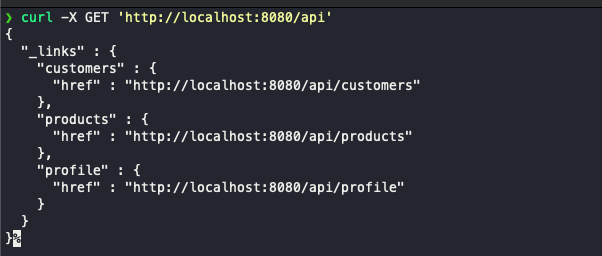
만약, 특정 리소스를 노출시키고 싶지 않다면 제외할 수 있다.
Product 리소스를 제외해보자.
1 |
|
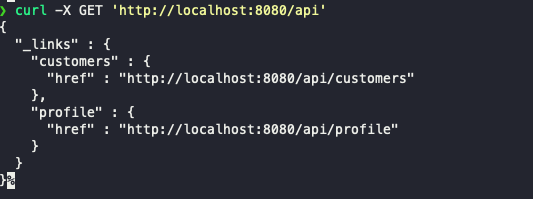
이제, customers 의 next level link 를 다시 호출해보자.
jko 와 jun 정보를 얻을 수 있다.
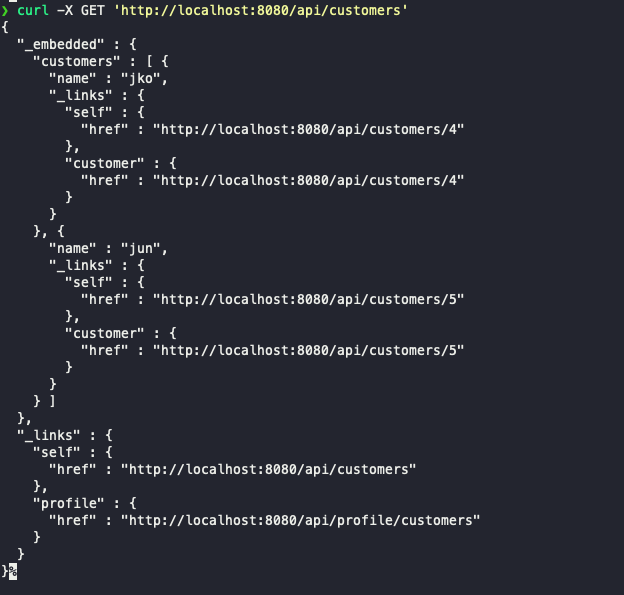
New Entity
Spring Data Rest 를 활용해서 entity 추가도 가능하다.
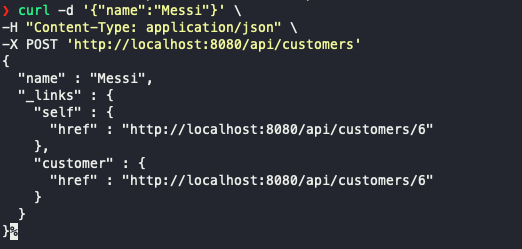
그리고, customers 전체 리스트를 확인해보면, 추가된 결과를 알 수 있다.
